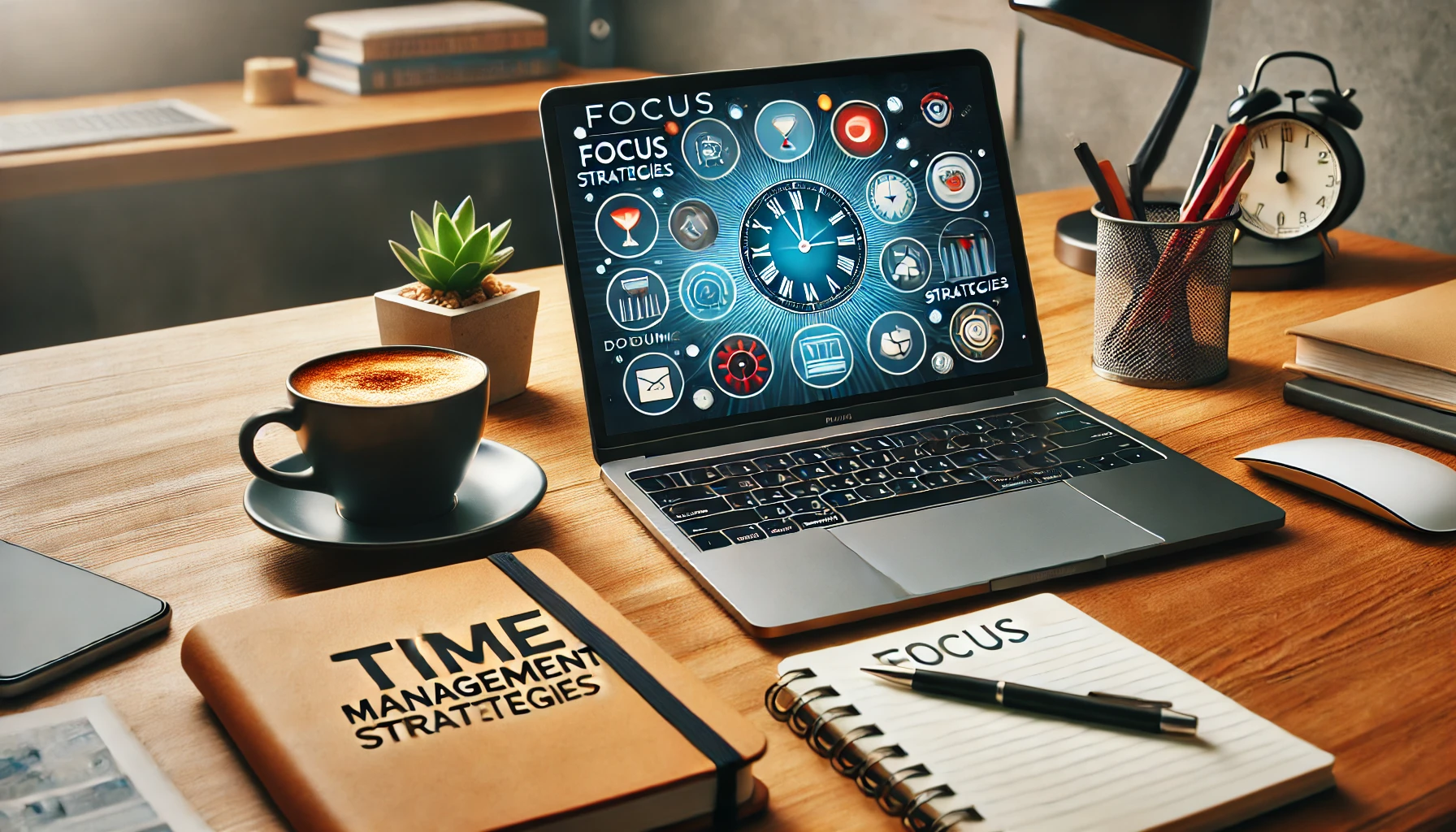In an age of constant notifications, multitasking, and mental overload, maintaining focus is one of the most valuable (and rare) skills you can develop. Whether you’re working on a big project or simply trying to be present in a conversation, your ability to concentrate deeply is what separates meaningful progress from scattered busyness.
Focus is not something you’re born with—it’s something you train. Here’s how to sharpen your focus and stay concentrated even in a distracting world.
My Personal Focus Ritual
I’ve come to realize that my mind needs help to focus. That’s why I rely on small rituals to prepare myself for deep work—things like a short breathing exercise, a glass of water at my desk, or even the act of closing all unnecessary browser tabs. But one habit has helped the most: defining a clear work package that I commit to finishing before any kind of pause. That intention signals to my brain that it’s time to lock in. Also, limiting external stimuli isn’t about luck—it’s a strategic choice. I don’t expect to stay focused if I leave room for interruptions to find me.
1. Shape Your Environment Intentionally
Your surroundings are either helping your focus—or sabotaging it. The easiest way to concentrate better is to make distraction harder to access.
Turn off non-essential notifications. Close tabs you don’t need. Use physical or digital “Do Not Disturb” signs. A clean desk with only the tools for your current task primes your mind for clarity. And if you share your workspace, let others know when you need uninterrupted time.
2. Build a “Focus On, Focus Off” Rhythm
Instead of pushing yourself for hours, alternate between focused effort and short recovery. While the Pomodoro technique (25 minutes on, 5 minutes off) is popular, what matters is the rhythm, not the specific numbers.
Try “work sprints” of 40–50 minutes followed by a 10-minute mental reset. Use that break to move your body, hydrate, or simply look out the window—anything that’s not screen-based. This rhythm helps you avoid cognitive fatigue and stay consistent for longer periods.
3. Use Anchoring Rituals to Prime Focus
The brain loves patterns. Rituals before work act like a mental “switch” into concentration mode.
Examples include lighting a candle, putting on instrumental music, using a specific mug for your work hours, or starting your session with a 30-second breathing cycle. These cues, repeated daily, signal to your mind that it’s time to concentrate.
4. Focus on One Input Stream at a Time
Multitasking is a myth. What we call multitasking is really task-switching—and every switch costs you time and mental clarity.
Instead, try “monotasking”: One window. One tab. One goal.
Need to read and take notes? Use a split-screen. Working on writing? Shut down everything but your writing tool. When your attention is unified, your quality and speed increase naturally.
5. Use Visual Cues to Reinforce Focus
Visual systems can reinforce your focus in simple but powerful ways.
Use post-it notes or digital dashboards with your single task for the hour. Write your intention at the top of your notebook or planner before each work session. Seeing it in front of you helps anchor your attention when it drifts.
6. Train Your Brain with Cognitive Exercises
Focus is like a mental muscle—it gets stronger with deliberate practice. Brain training apps can help, but so can low-tech alternatives.
Read a book for 20+ minutes without switching tasks. Do a logic puzzle every morning. Memorize a short passage and try to recite it from memory. These exercises improve cognitive stamina, which enhances your natural concentration.
7. Eat for Energy, Not Just Fullness
What you consume affects your mind. Foods rich in omega-3s (like walnuts and salmon), antioxidants (like blueberries), and clean proteins (like eggs) support optimal brain function.
Avoid high-sugar snacks that lead to energy crashes. Instead, eat foods that release energy slowly. And hydrate—your brain is mostly water, and even a 1% drop in hydration can reduce focus.
8. Use Friction to Block Distractions
If you’re trying to avoid a behavior, add friction. If you’re trying to adopt a behavior, remove it. This simple principle applies directly to focus.
Need to avoid social media? Log out after each session. Turn off app badges. Place your phone in another room. Want to start a deep work session? Keep your workspace always ready and distraction-free, so you can dive in without friction.
9. Define Clear Completion Points
Open-ended tasks lead to drifting attention. But when you know exactly what success looks like for the current work block, your brain is more likely to stay engaged.
Define the next milestone: Write 500 words. Finalize three slides. Respond to two key client emails. When your brain knows there’s a “finish line,” it’s more willing to stay the course.
10. Protect Your Best Mental Hours
Most people have peak focus windows—often in the morning or late at night. Use these hours for high-focus work, not for meetings, emails, or admin.
Track your energy throughout the day. When are you most clear-headed? That’s when your hardest cognitive work should happen. Guard that time as sacred—because it is.
Final Thoughts
Improving focus isn’t about rigid discipline—it’s about intelligent design. You can’t expect your brain to perform well in a chaotic, overstimulated environment. Instead, build rituals, remove friction, and define clear goals.
- Prime your brain with focus rituals and visual anchors
- Protect your peak mental hours and minimize inputs
- Create intentional closure to each work block
- Don’t wait for focus—design for it
You don’t need superpowers to stay focused. Just systems, self-awareness, and a willingness to train your mind to pay attention on purpose.

